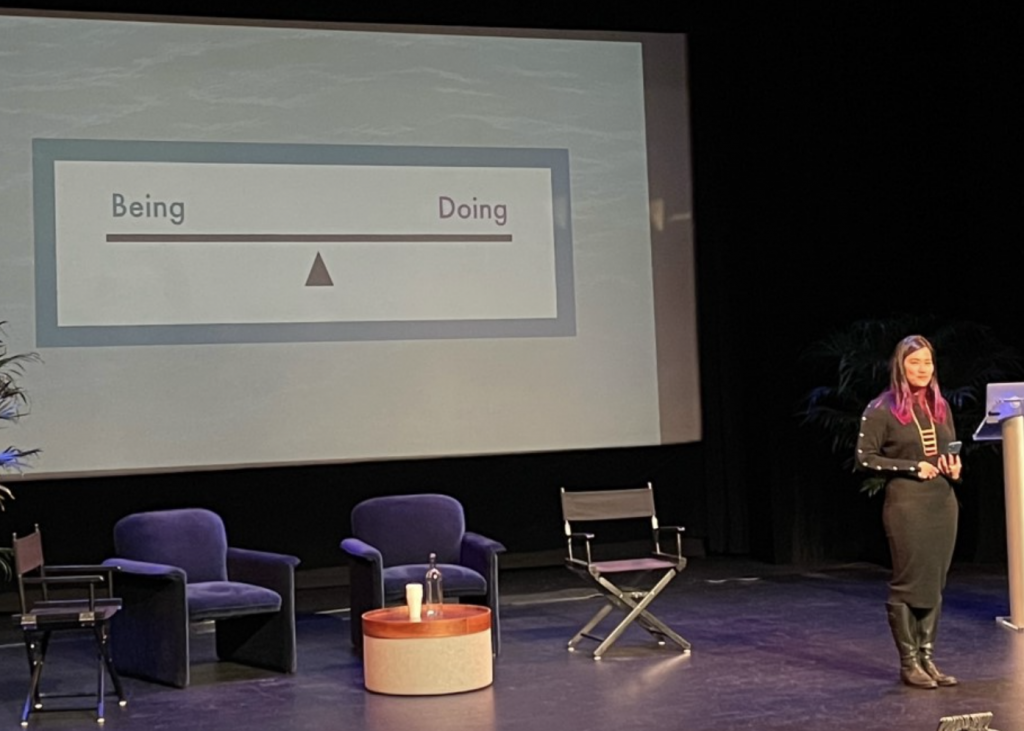Leading Design 2022: Live Notes
I’m in NYC for Leading Design 2022, and I’m livebloging the event (taking notes in real time, updated for each talk). You can alos see my notes from the 2021 and 2016 events.
Comments in brackets [] are mine.
1. Kat Vellos – Better Than Small Talk
Vellos is the author of the excellent book, We Should Get Together. In addition to being a design leader she’s a facilitator and community builder. Conversations are a key part of this. But we live in a world starved of meaningful connection, even before the pandemic.
She created better than small talk, a simple system for better conversations, and some cards from this system were given out at the event. The core idea was to get beyond the basic, cliche conversations we’ve learned to have but that don’t really work. Generous curiosity isn’t hard to cultivate. Questions are a doorway to connection. A connection creates relationships that define the quality of our lives.
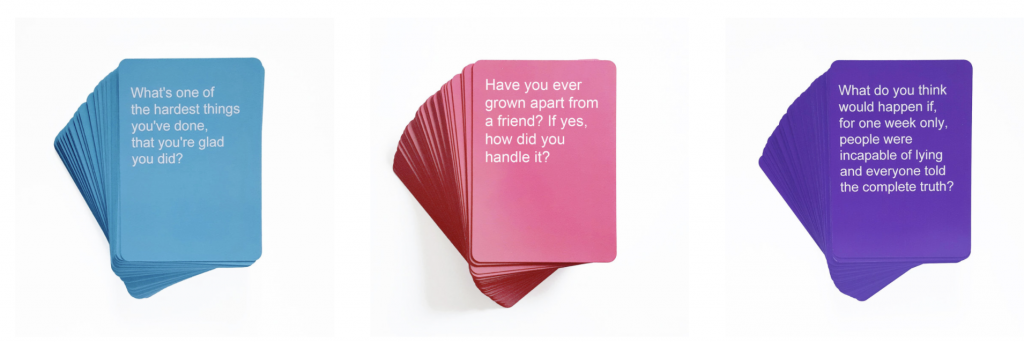
2. Peter Merholz – The Evolving Design Leader
The Peter Principle: how people get promoted into their level of incompetence. Five years ago Merholz gave a talk on design leadership of Coach, Diplomat, Champion and Architect.
- Coach: Your job is to get the most out of your team.
- Diplomat: Creating a space for design to do well across functions
- Champion: Managing up and out. Engaging with stakeholders and executives.
- Architect: Putting things in place so good design can scale
Design staffing continues to grow very fast. And that means that leaders and managers need to grow and we need more of them. We are putting people into management and leadership without preparing them. He wants us to get out in front of this incompetence.
“She went too deep too fast” – about a new design director, from a VP of Design. New directors tend to focus on what they are already good at (classic Peter Principle).
He described the path of becoming a design leader: leader, to manager (front line manager), to director (middle management), to VP of design (executive). In each of these stages, you are evolving into a new form.
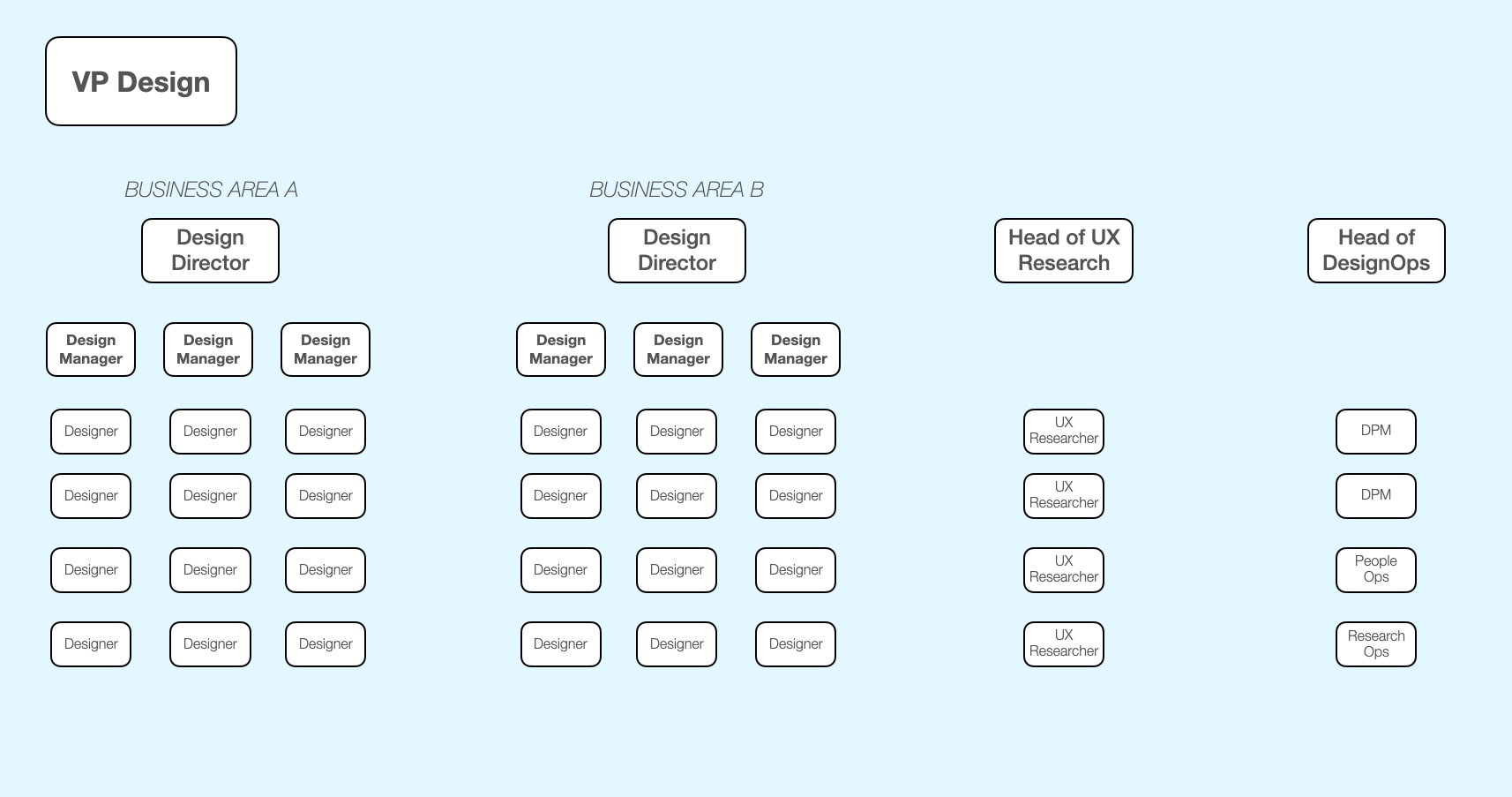
Design leader’s area of attention:
- Creative: vision, direction, practice, standards (goal is quality)
- Business: design work aligns with business, cross function and planning (goal is business sucess)
- People: recruiting and hiring, performance and career development, culture (goal is team health)
- Operations: Program management, communication, budgets (goal is effectiveness)
How the focus of design leader’s shifts as you rise:
- Lead -> Manager: mostly creative leadership and people management
- Manager -> Director: shift to cross functional relationships – less time managing down – sideways and up. Bad middle managers are a black hole, since they are such a pivot point.
- Director to VP: You are not recieving strategy, you are informing strategy. You define what quality means and how it can be achieved. You are responsible for defining and delivering on value.
- As you rise your attention shifts to more and more managing up and away from your own team
The org looks to the design leader as their figurehead – the designers want this person to be an inspiration. And they are expected to do everything (design savior). How can we shape design leadership teams so that the burden of leadership is shared?
3. Hayley Hughes – Trust Between Teams
She opened her talk sharing a story about her Mom, who is ill, and needs an entire team of people to give her support. Over years silos have formed and individual experts have their own systems, that don’t work very well in aggregate. She has spent most of her career working on design systems at big organizations.
- Team of teams
- understanding a team of teams
- What holds us back
- Removing the blockers
Four archetypes for teams:
- Command – hieracy is efficient, but least resilient
- Command of teams: teams work well, until they hit a silo
- Team of teams: each individual knows one other person on another team
She used to study food systems, how people obtain and are provided with sources for food. She was in Austin during the big storm in 2021, when the power went out and they lost all of their food. Soon they learned through neighbors and text messages who had surplus food. Sometimes systems that are organic and informal have more resilience than the formalized ones.
messy relationships and messy cities are the most resilient
– Erin White
What if we redesigned teamwork to be more collaborative? IBM had a tool called Radar that allowed teams to switch perspectives, changing their view to be less siloed.
Org charts are hierarchical, but there are many other ways to map the relationships between people and teams.
What holds us back?
Common false beliefes:
- “it will slow us down.” – a fear that if we aren’t sprinting, we must be falling behind. Leads to burnout.
- “We’ll give you visibility.” – giving visibility can just be theater – if it’s not tied to planning and restructuring.
- “Management won’t buy in.” – suggests that you need permission to try somerthing new. But often bosses care about the results more than the means.
- “Our roadmap is already planned.” – this is a fear of ambiguity and change. It is safe to hafe a plan, the reality is that most things don’t go as planned. There must be room for emerging opportunities.
- “We own this.” – ownership can be the kiss of death for collaboration. Stewardship is a better model.
Eventually we need to redesign organizations to better afford the real goals, instead of what traditional organizational design tends to be good for.
FInal aspiration: she encouraged us during times of uncertainty, crisis and growth to choose collaboration over silos.
4. Ovetta Sampson – The Planck Value of Design
She grew up in Chicago and is an amateur physicist Planck value (or constant) is a fundamental law of how atoms work and it doesn’t stay in the normal bounds of how we think the world works. She started as a designer, went to design lead, then design director and now is a VP. She says Merholz is right in how unprepared people are to be in these roles, and as you rise more time is spent with other roles than with designers.
We can’t keep our insular preciousness about our craft – we have to be collective if our goal of human-centered design is to get good design into the products and services.
Her statement for what she does: “To amplify the beauty of humanity with design while avoiding practices that exploit its fragility.”
“Design is the conscious and intuitive effort to impose meaning order to chaos” – Papanek
“Without design leadership you dob’t know where you are going.
She referenced this paper (Core Responsibilities of Design Leaders in Commercially Challenging Environment):
Design is a verb:
- how a produt is developed
- How it works
- How it is experienced
- How it is improved
Her definition of a good manager: My job as a leader is to have you operate in your jam 90% of the time. 10% is unavoidable BS.
She told a story about working with young children and teaching them a design thinking method. She didn’t use any of the formal language we do. The task was to redesign the classroom. They emerged into a natural and shared approach to problem-solving (collective leadership tenets):
- They treated the class like an ecosystem
- Share and rotating decision making
- People are trusted
- Success comes from diverse perspective
- Transparent and effective communication
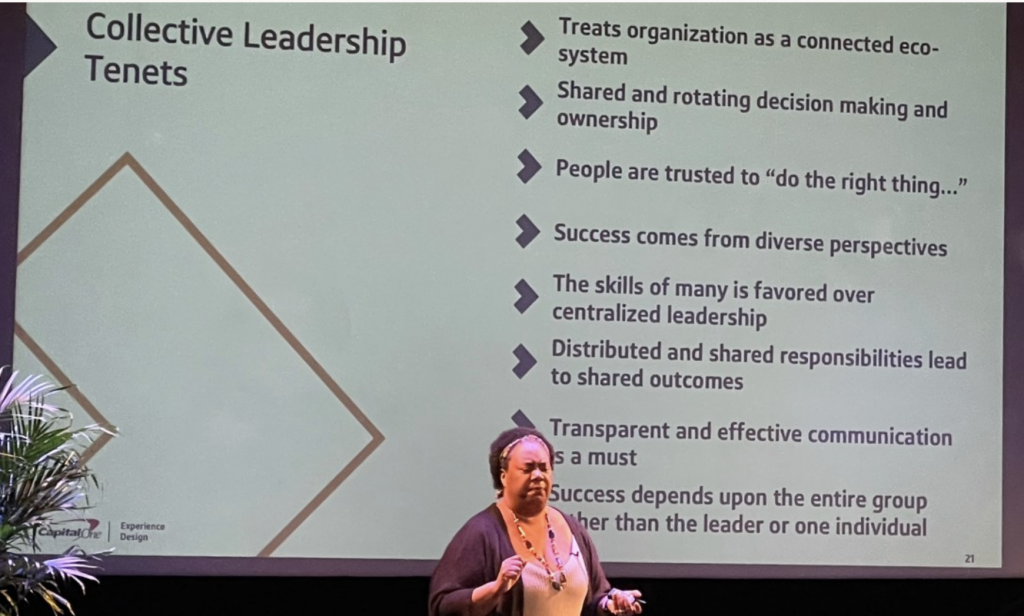
4. Alice Quan – Designing Your Dream Job(s): The Art of IKIGAI
In this short tlak, Quan offered that she is in her 6th dream job. She grew up in a small town in Illinois and her parents immigrated from China and Hong Kong (they are “asian tiger parents”). They didn’t have much (his family pooled their money to send her father to America) so she learned to make things scratch, and the idea of working with teams in organizations to make things means much to her.
Her father explained that she had three career choices they’d support: doctor, accountant or lawyer. But her best friend from high school studied design and she was intrigued. On her own, she built a portfolio and applied to design school but was rejected. But she persisted and asked for feedback and eventually got in and got a full scholarship. Only then did she tell her parents. (She joked that she catches herself doing the same things to her kids, telling them that e-sports is not a real career).
This was her Ikigai origin story. She was slowly learning how to apply the framework in her own life (she references Karate Kid, and how it takes commitment and patience to find your way. IK = ALIVE / GAI = BENEFIT).

5. Dianne Que – “I got you”: A Meditation on Radical Inclusion
The first step in inclhsive leadership is to see people as people. She shared some of her personal history (child of imigrants).
Meditation: a practice of cultivating understanding, love and compassion by looking deeply, first for ourselves and then for others.
Incluion: the practice of building the culture of belonging by actively inviting the contriubtion and participation of all people.
Practice is something you need to do regularly and often in order to get better at it.
Story: May 26, 2020. Day after George Floyd was murdered. She was on a work call created to create space for people to discuss their feelings about what happened, but there wasn’t a single person of color on the call. With the support of her manager they created a series of conversations for their creative managers. They started with managers and hiring managers (there was a lot of open head count on the team).
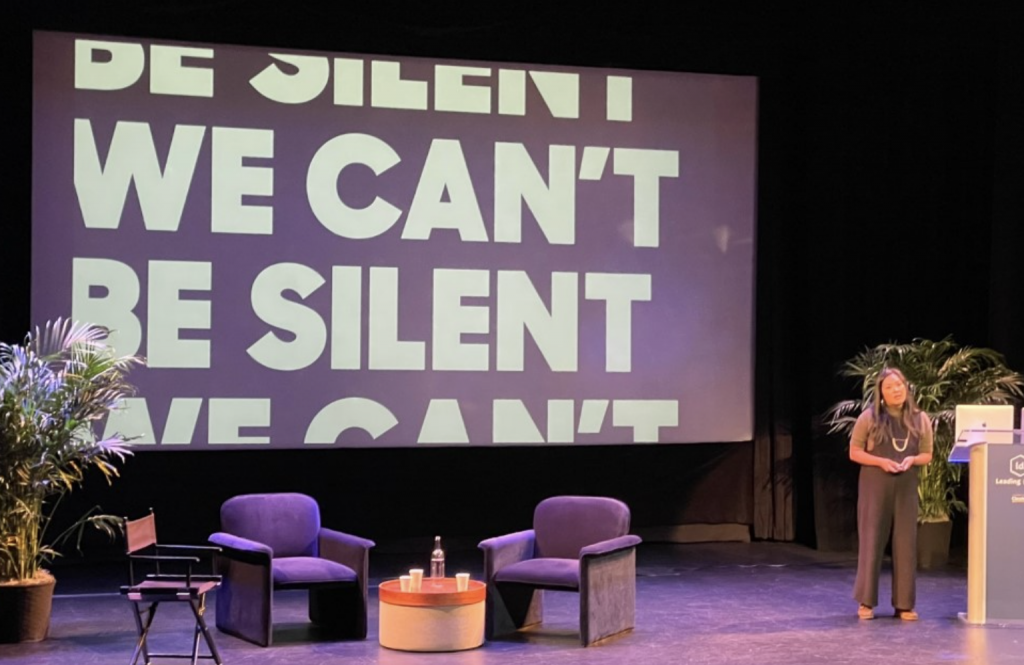
First question from management was: “What outcomes can we expect from these conversations?”
We have a culture that emphasizes:
- doing over reflecting
- quantity over quality
- efficiency over relatonships
- Urgency over Empathy
It’s common to hear people say things like, “I’m all for giving people a chance. but I don’t want ot hold anyone’s hand” which creates a paradox.
The process and the conversations that can often have the most value and creates the possibility for the desired outcomes.
- Start to build empathy
- Start to identify WHY
- Start an ongoing conversation
- Start to develop a shared DEI vocabulary
The business why / The moral Why (source Michelle Kim, 2021)
- DEI is good for business / it’s the right thing to do
- DEI leads to innovation / I want to help others
- DEI leads to profitability / People are suffering
“I trust you and will back you up” Is a rare thing to hear from a (hiring) manager. Which leads to a culture of “I got you. We got us.”
In summer of 2020 there was blackout Tuesday. It was supposed to be an act of solidarity. It had an unitended effect of making actual BLM content harder to find. We will make mistakes, but the question is what will we do next. Commit to a life of stumbling forward (Contradictions for while people in racial justice work).
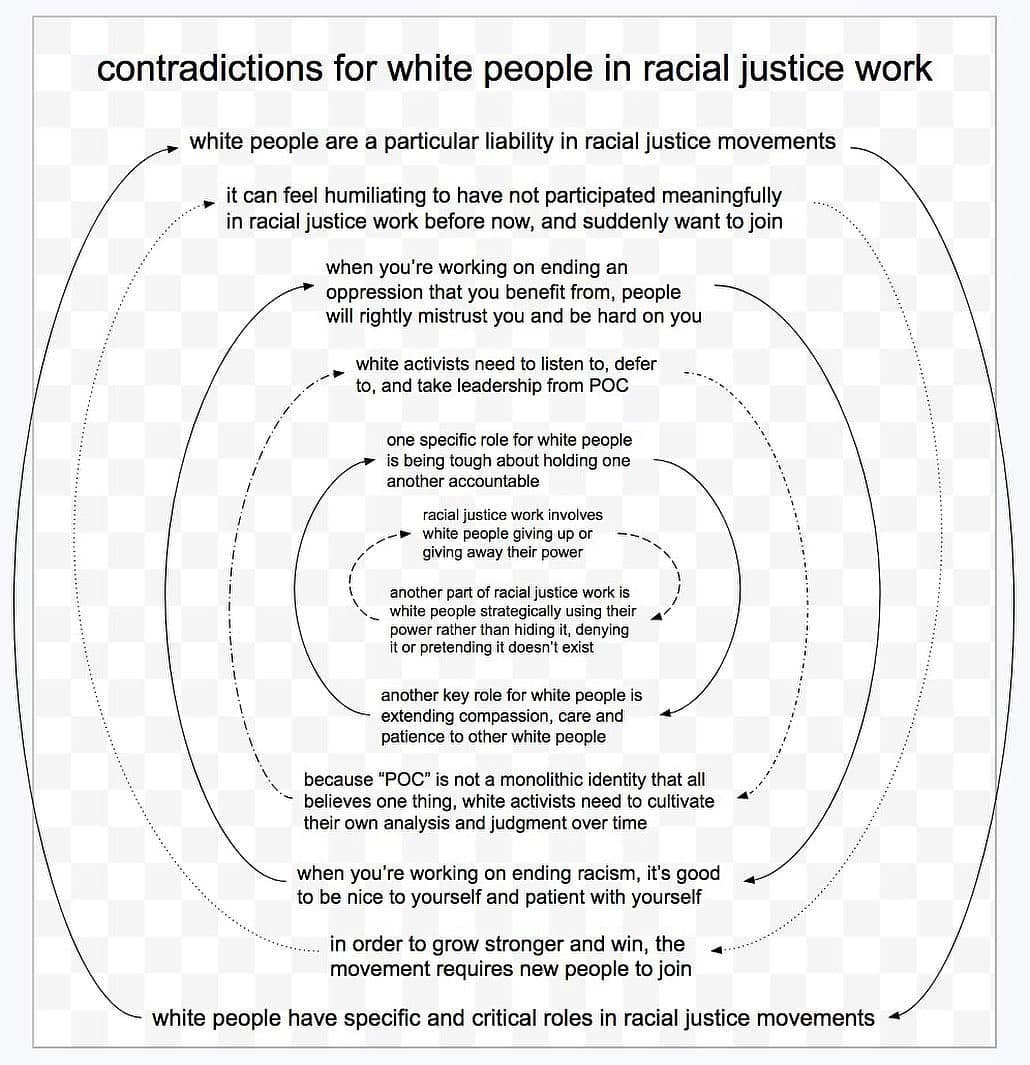
- Why: our liberation is bound together
- Embrace the process and the outcome
- Commit to a lifetime of stumbling forward
- Hold multiple truths. Embrace the status quo.
She closed referencing many of the books and sources she has learned from.
6. Samantha Warren, Designing creative collaboration in a virtual world
[Warren is an excellent speaker and I confess i didn’t take great notes because I was enjoying her talk so much].
She wanted to be a designer when she was growing up (which other speakers mentioned was not their path). She observed her father visiting design studios and observed their creative spaces and was inspired by them. And she felt like she was observing unicorns work – and that these were her people.
She had a creative career and worked for a long time, until the pandemic happened. It changed how she felt about work. In March 2021, she wondered about how there might not be a return to design studios. Staring at a box, with little boxes in it, didn’t feel creative. She used to love planning offsites and thinking about how to cultivate safe and fun environments.
The key to workplace creativity is buildng psychological safety. But the nature of work psychology has changed because we are all remote.
She took time off and traveled. And talked to her friends and family. And tried to reframe the problem shw was trying to solve.
“You can take the worst feeling in the world and reframe it so that that terrible feeling becomes its own solution.” – Milton Erickson
It is design’s responsibility to lead broad concept making (low fidelity) to specific execution (high fidelity).
When you don’t have a whiteboard in the hallway, how do you replace that persistent team level open space? They use Canvas, but there are other tools. She explained the design process she used (and how the diagrams for design processes aren’t realistic).
She wasn’t sure in the pandemic that she wanted to continue in design. But in reframing the problem she has found new ways to collaborate and is optimistic about the possibility of connection.
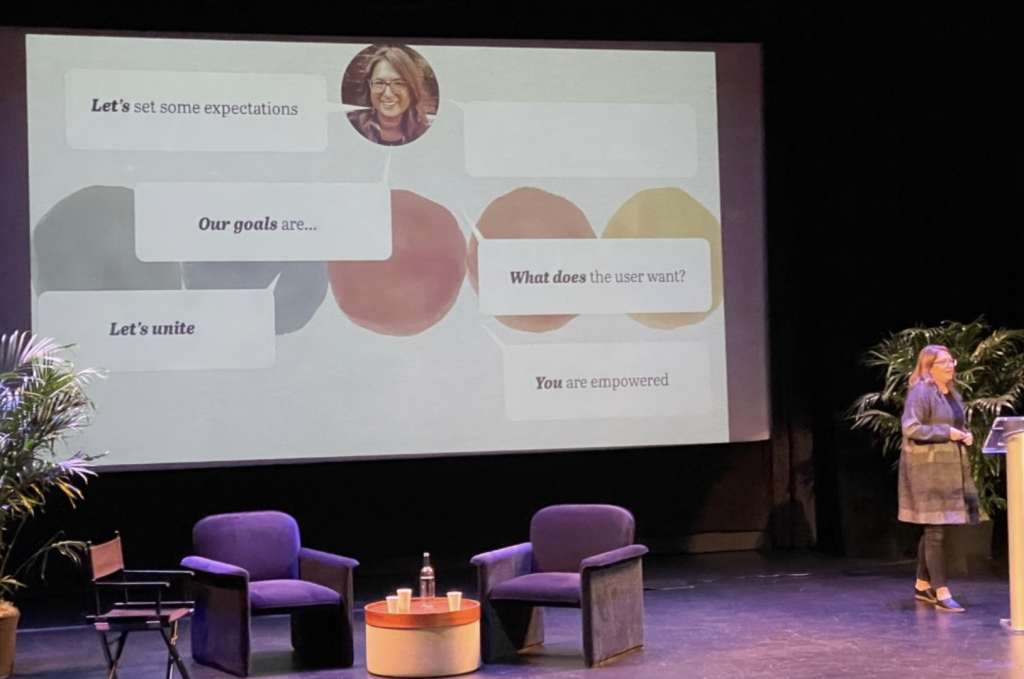
(I misssed the last talk of the day, by Leslie Yang).
8. Cap Watkins, How To C-Level
[Sadly I lost the first half of my notes <shakes fist at ‘autosave’. He did an excellent job explaining why many leaders are indecisive and the basic psychology behind it.]
Symtoms of Indecisveness:
- Consensus building – people who won’t say yes unless everyone else does
- TMI – leaders who require too much information or impossible research
- Reopening doors – leaders who make a decision but then revisit it over and over again
He explained that becoming an executive should be driven by either the desire to do better than the managers you see, or to find the right altitude for the kind of work you like to do.
Major reasons leaders struggle include indecision, lack of resilience and being stuck in the past.
“If you hit a wrong note it’s the next note you play that determines if it is good or bad” – Miles Davis
Good leaders understand good people will make mistakes. Etsy had a “three arm sweater” award to the best (worst) mistake made that year.
His company uses a 4 day workweek. Which many companies talk about but few have tried. His team started it as a two month trial. Immediately people were happy about it. At the end of the trial they decided to extend it another few months.
He’d be asked questions like “how are you measuring productivity?” and his answer was mostly, “we don’t”. His company does make physical products so there are more measurable than the average tech company, but he thinks these questions come from fear.
They created resiliency and flexibility in how they manage people. Their retention numbers have remained steady from before and through the pandemic. The four-day workweek helps, but their culture is likely the greatest factor.
He thanked all leaders for what is a very difficult and lonely job during a time when it is very hard to do.
In Q&A he mentioned an exercise from Designing Your Life, where you track your activities and note if you feel energized after or drained. It can help a manager learn if they should stay in leadership roles or would be happier in a different role.
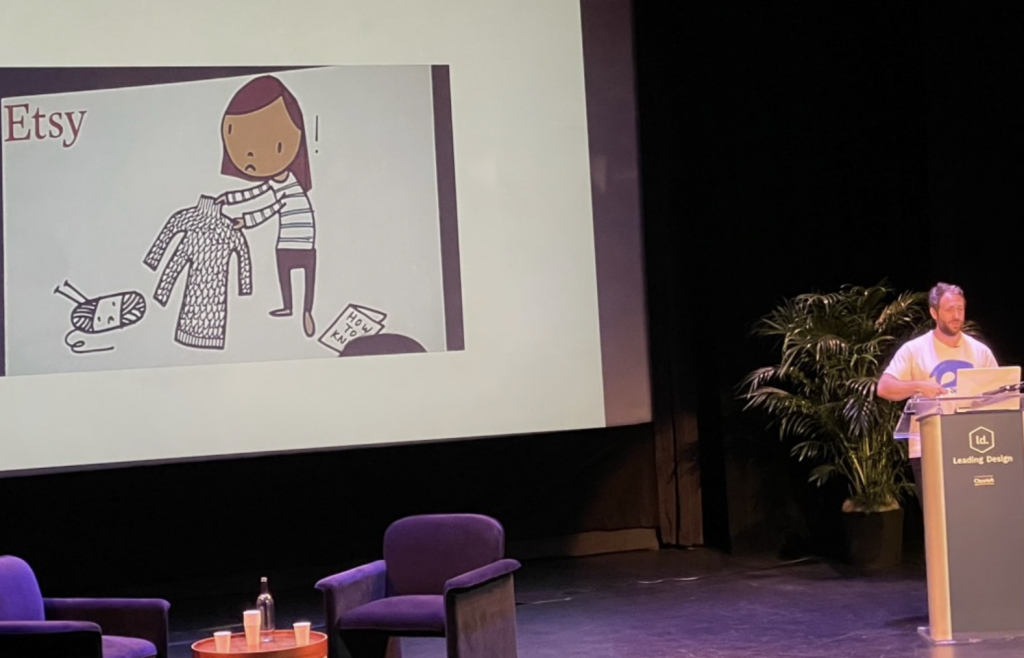
9. Returning to our maker roots, Baxley, Black and Walter
Baxley, Black and Walter are friends who started a podcast called Reconsidering, which explores larger questions about life. What keeps me here, with these people, doing these things?
Baxley read an article that Walter wrote and they became friends around 2014. Baxley had worked with Black at Pinterest in the past. Black was an early guest of the show who shifted into a producer role.
As you get distant from the thing that got you into this profession, you tend to feel disconnected. Play and curiosity often gets beaten out of us.
Baxley offered that software is an unusual medium in that you rarely get to see people use your work in the wild. But the podcast has been satisfying in that it’s a different medium.
The fact that they do it together makes it easier to do all the reading and it feels like less of chore. They hold each other accountable.
They shared stories about how in the last few years they’ve reconsidered how they structure their lives. Black and Walter acknowledged that their career has taken up a disproportionate part of their lives, something the pandemic has made even clearer.
They ask each guest: what advice would the 24-year-old you give to you now?
“Keep doing what you’re doing. You’re making a difference. And don’t worry so much.” – Judy Wert
“Choose uncomfortable expansion over comfortable diminishment” – Oliver Burkeman
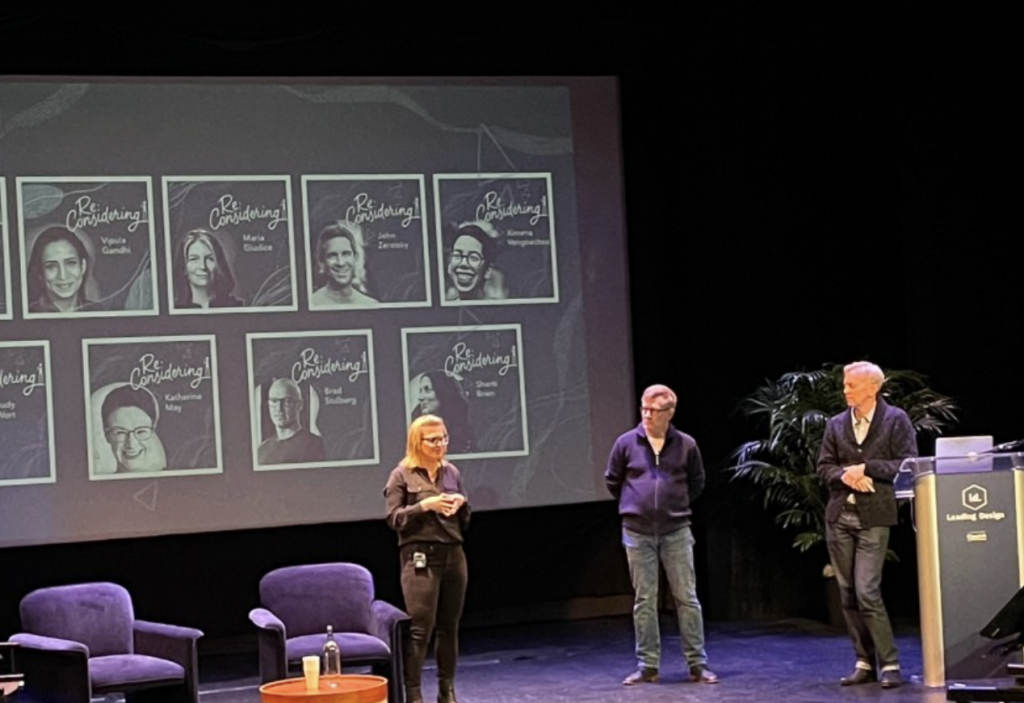
10. Tutti Taygerly, Make space to lead
She grew up with an Asian tiger Mom. She wanted to be a poet and a writer, but she was enrolled in a private boarding school. She learned she received love and attention when she achieved. She worked her way up all the rungs of the career ladder. She thought she had it all. A husband and two kids. She had a process of ruthless prioritization. The “punishment culture” of always expecting more from yourself.
She shared the story of her husband telling her their marriage was over and a few minutes later having to meet with her boss to do her performance review. And she broke down. She learned that she did really well but didn’t care at all anymore. After a few years of processing and grieving, she left the company.
She learned the lesson she valued people and processes more than products. Now she’s a leadership coach and helps people find their north star. She coaches like a designer.
The patterns we use keep us safe and they are ways to get through. But these patterns can then become our identity and that’s where it can become dangerous.
Imagine a crit scenario where the leader is too commanding and controlling. Armor can be a way of being. Imagine another crit where there are questions and explorations. Doing is climbing up the ladder.
“Management is efficiency in climbing the ladder of success; leadership determines whether the ladder is leaning against the right wall.” -Stephen Covey.
ME = Community + Projects + People
She shared a story about a woman she coached who was told to be more assertive (which can suggest bias). But she was a quieter person. She had to work to find ways to make her “weakness” a superpower. She was never going to be loud and assertive. Instead, she found ways to prepare for meetings and help other people to prepare (by creating pre-reading and other tasks that would improve how the meetings went).
She offered the method of tracking your activities and noting what gives you energy and what makes you feel drained.
We all work with some difficult people: focus on the 10% truth you can agree with.
Experiment: What is something you heard today and try it. Let her know how it goes.
